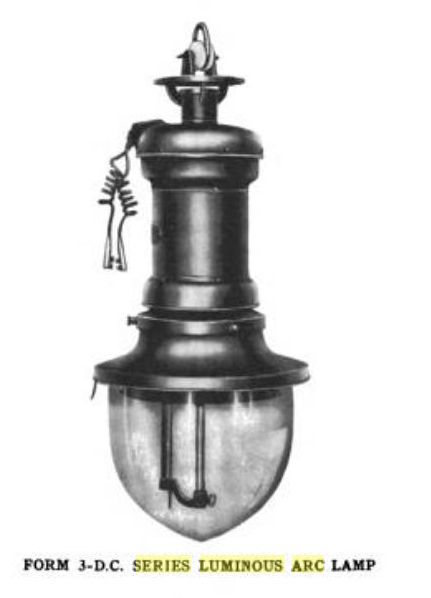General Electric Luminous Arc Lamp (magnetite lamp)
By Mike Spadafora; posted February 27, 2021
View Original: Click to zoom, then click to magnify (431 x 598) 94KB

|
Between 1901 and 1904 Charles Steinmetz "The brain of General Electric" worked on the development of a new more efficient type of arc lamp. Instead of the traditional carbon rods used in carbon arc lamps this new technology used a rod made of a thin steel tube filled with magnetite powder (Fe3O4) and a solid copper rod as the other electrode. This lamp became known as the magnetite lamp. These lamps produced a much brighter more balanced white light then the traditional carbon arcs of the day. Because of the dust and fumes these lamps produced they were only suitable for outdoor street lighting. Between 1904 and 1940 more then half a million of these lamps were in use as street lamps all over North America. In the 1930's they began to fall out of favor as better lighting technology came along that required far less maintenance. These lamps required that the lower magnetite rod was replaced after about 130 hours of service [id=618976916] Westinghouse produced a competing version of the magnetite lamp that never gained the popularity of the GE lamp pictured here. The competitive Westinghouse design was created in an attempt to circumvent most of General Electric's patents on these lamps[id=677213522] General Electric and Westinghouse were the only North American manufacturers that developed and produced magnetite lamps. Each manufacturer produced a unique patented proprietary design. The consumable electrodes for these lamps were proprietary products of each respective manufacturer. I have never located an old stock supply of replacement electrodes for ether type of lamp although I have experimented with making reproduction replacement electrodes for the GE lamps. |